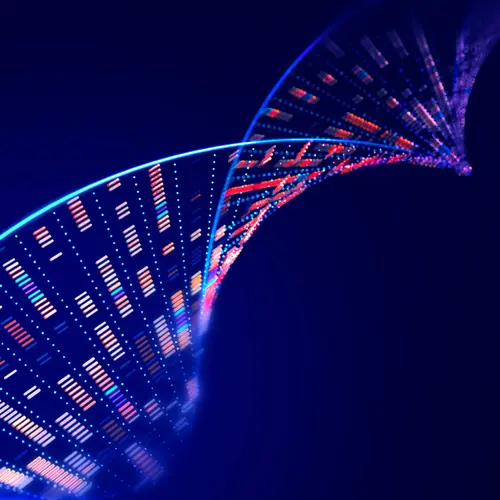Ulcerative colitis (UC) is a type of inflammatory bowel disease (IBD) that inflames the lining of the intestine. It causes symptoms like diarrhea and belly pain. Some people with UC also have problems in other parts of their body, which are called extraintestinal complications.
Arthritis is the most common extraintestinal complication of IBD. If you have UC, you're more likely to have arthritis, and vice versa. As many as 1 in 3 people with IBD also have swollen and painful joints.
Ankylosing spondylitis (AS) is a rare type of arthritis that affects about 3% of people with IBD. It causes pain and swelling of joints in the spine and pelvis. AS also inflames other parts of the body, like the eyes, lungs, and heart valves.
AS can damage your joints if you don't get it under control. So if you live with UC, be alert for joint symptoms and let your doctor know about them right away. Getting started on treatment quickly can protect both your joints and GI tract.
What Is Ankylosing Spondylitis?
Ankylosing spondylitis comes in two types: Axial and peripheral. Axial spondyloarthritis is more common. It affects the spine and the sacroiliac joints that connect the lower part of your spine to your pelvis.
Symptoms include pain in the lower back, hips, and neck. Without treatment, AS makes the spine less flexible and harder to move.
Peripheral spondyloarthritis causes inflammation in joints outside of the spine. It can affect joints in the hands, wrists, elbows, shoulders, knees, ankles, and feet.
Doctors don't know exactly what causes AS, but they suspect genes are involved. People who inherit a gene called HLA-B27 are at much higher risk for this type of arthritis.
What's the Link Between UC and AS?
Both UC and AS are inflammatory diseases. UC inflames the intestine, while AS inflames the spine.
A faulty immune response triggers inflammation in both diseases. Gene changes might be behind the immune misfire. People with IBD often have family members with AS. Scientists have found a few genes that might trigger both diseases, including HLA-B27. But just because you have the HLA gene doesn't mean you'll get AS.
There's also a strong link between the gut and the joints. Scientists have found that bacteria and immune cells from the intestine can travel to the joints and cause inflammation there.
How Do I Know If I Have AS?
Symptoms of ankylosing spondylitis include pain and stiffness in the lower back, neck, and hips. Because low back pain is so common, it can be hard to know whether your back hurts from AS or for another reason.
One way to tell AS apart from other causes of back pain is that AS causes early morning stiffness. Your back might hurt more when you first wake up, but the pain should improve once you start moving. Often in AS the pain is worse when you lie down and it gets better with exercise. AS also causes pain in the bottom of the feet or heels.
Sometimes joint pain starts soon after an ulcerative colitis diagnosis. Arthritis symptoms might even start before GI symptoms. But some people live with UC for many years before they have any AS symptoms.
If you do have joint pain or stiffness in your back or other parts of your body, it's important to see a rheumatologist or your UC doctor for a diagnosis. Getting started on a treatment quickly can help prevent AS from damaging your joints.
Medicines That Treat Ulcerative Colitis and Ankylosing Spondylitis
Many of the treatments for UC and AS work by lowering inflammation in your body. Some of the same medicines help with both conditions.
TNF inhibitors are disease-modifying drugs that slow UC and AS and prevent complications. These drugs target a protein called tumor necrosis factor that your immune system makes. TNF inhibitors come as an injection that you get under the skin or through an IV.
A few TNF inhibitors treat both AS and UC:
The Janus kinase (JAK) inhibitor tofacitinib (Xeljanz, Xeljanz-XR) may be used if you don’t respond to a TNF.
These medicines reduce inflammation in the joints and promote healing in the intestines.
Another disease-modifying drug, methotrexate (Rheumatrex, Trexall), also helps with joint pain linked to IBD.
Steroids and aminosalicylates are UC treatments that may help with arthritis, too. As these medications lower inflammation in the colon, they also relieve peripheral arthritis pain. But they don't usually help with axial arthritis, and they can take months to start working.
Medicines to Avoid if You Have UC
A few medicines that help AS may be risky for people with UC. Etanercept (Enbrel) is a TNF inhibitor that treats AS but doesn't help with UC. You may want to avoid Enbrel because there's a chance it could cause more IBD flare-ups.
Nonsteroidal anti-inflammatory medicines (NSAIDs) like ibuprofen and naproxen are an important part of the treatment for AS. NSAIDs bring down swelling in the joints. But they're not recommended for people with ulcerative colitis because they irritate the lining of the intestines, which could trigger UC flares and make symptoms even worse.
Other Ways to Manage AS Symptoms
A few non-drug treatments are safe for both UC and AS.
Exercise. A daily walk or other form of exercise helps to relieve pain and improve flexibility. Exercise is also good for a healthy GI tract and for easing the stress of living with a chronic condition.
Relaxation techniques. Deep breathing, meditation, and yoga are other effective ways to relieve stress.
Physical therapy. Stretching and range-of-motion exercises help keep the joints in your spine mobile and prevent stiffness.
Heat. A warm compress or heating pad offers relief from a sore belly or joint pain.

